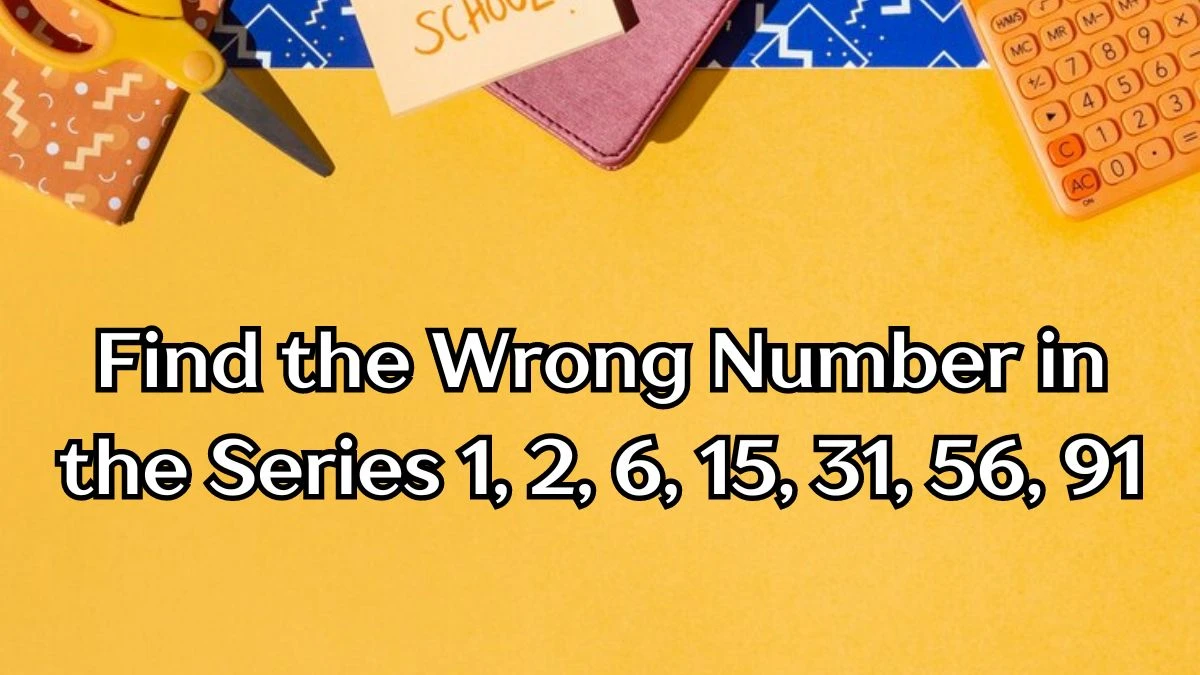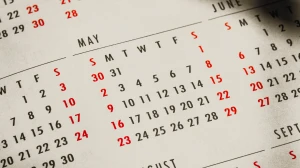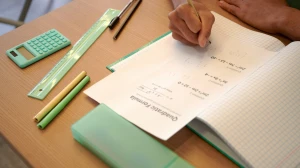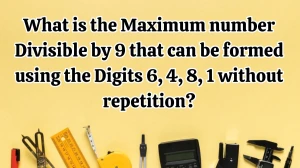Find the Wrong Number in the Series 1, 2, 6, 15, 31, 56, 91
by
Updated Jul 05, 2024

Find the Wrong Number in the Series 1, 2, 6, 15, 31, 56, 91
The given series is 1, 2, 6, 15, 31, 56, 91
Let's calculate the differences between consecutive terms
Difference between 2nd and 1st term: 2 - 1 = 1 = 1²
Difference between 3rd and 2nd term: 6 - 2 = 4 = 2²
Difference between 4th and 3rd term: 15 - 6 = 9 = 3²
Difference between 5th and 4th term: 31 - 15 = 16 = 4²
Difference between 6th and 5th term: 56 - 31 = 25 = 5²
Difference between 7th and 6th term: 91 - 56 = 35
The differences are 1², 2², 3², 4², 5², 35
The pattern here is that each difference corresponds to the square of the position of the term minus 1.
However, according to the pattern 6² should be 36 instead of 35. Therefore, 91 is the wrong number in the series.
Concept of Number theory
Number theory is a branch of mathematics that deals with the properties and relationships of numbers, particularly integers. It is one of the oldest and most fundamental areas of mathematical study, focusing on understanding the nature of numbers and their patterns.
Prime Numbers:
Number theory extensively studies prime numbers, which are integers greater than 1 that have no positive divisors other than 1 and themselves. It explores their distribution, properties, and theorems related to prime factorization.
Divisibility:
Number theory is crucial in understanding divisibility rules and properties of integers. It investigates when one number divides another without leaving a remainder, leading to concepts like greatest common divisors (GCD) and least common multiples (LCM).
Modular Arithmetic:
Modular arithmetic is a fundamental concept in number theory, dealing with the remainder when one number is divided by another. It has applications in cryptography, computer science, and various other fields.
Congruences:
Number theory studies congruences, which are relationships between integers concerning their remainders when divided by a fixed integer. It explores properties of congruences and their applications in solving equations.
Applications
These equations involve finding integer solutions to polynomial equations. Number theory provides techniques to solve such equations and explore whether solutions exist under specific conditions. Number theory forms the foundation of modern cryptography, ensuring secure communication over insecure channels by using concepts like prime factorization and modular arithmetic.
Number theory examines various sequences and patterns within numbers, such as Fibonacci sequence, Lucas sequence, and other recursively defined sequences. It is extensively used in problem-solving contexts, both in pure mathematics and applied fields like computer science, engineering, and physics, providing tools to analyze and solve complex problems involving integers.




